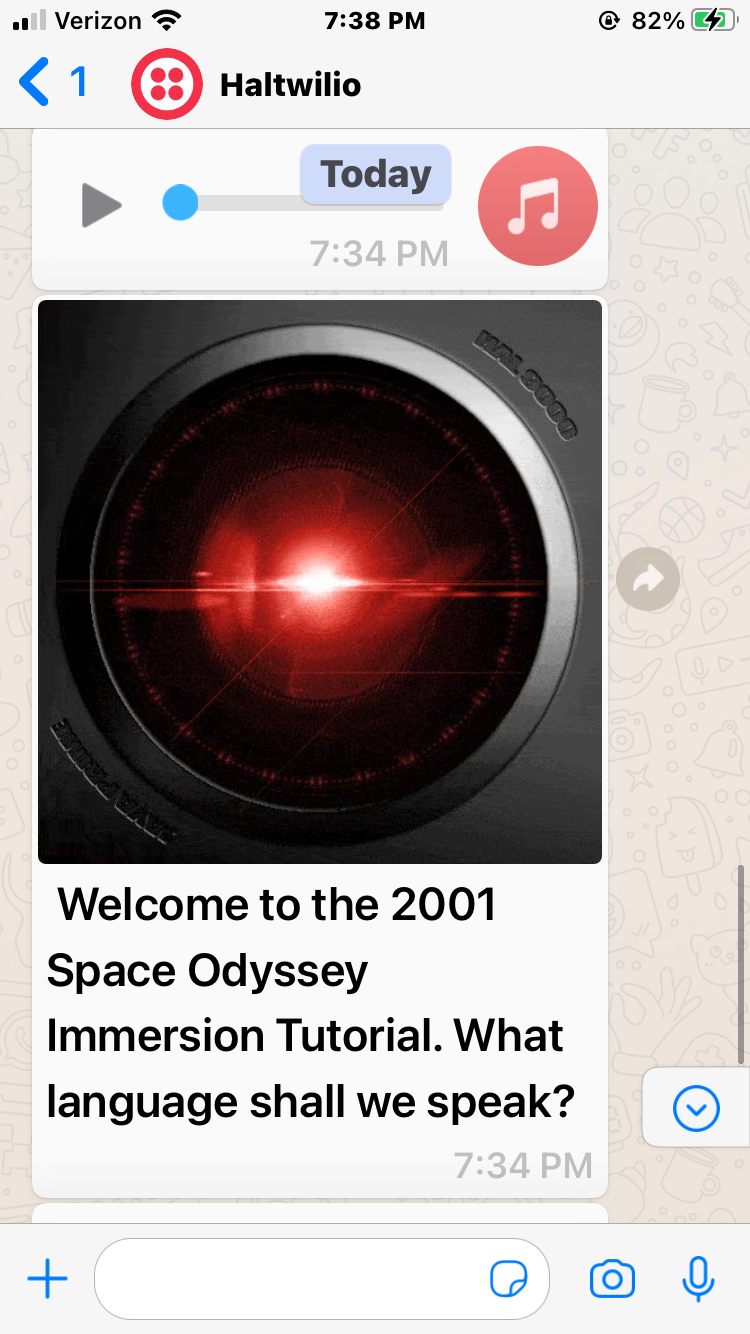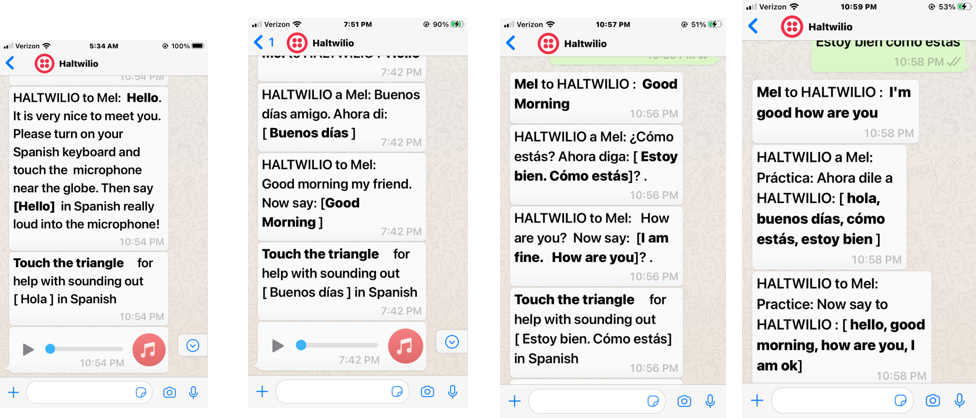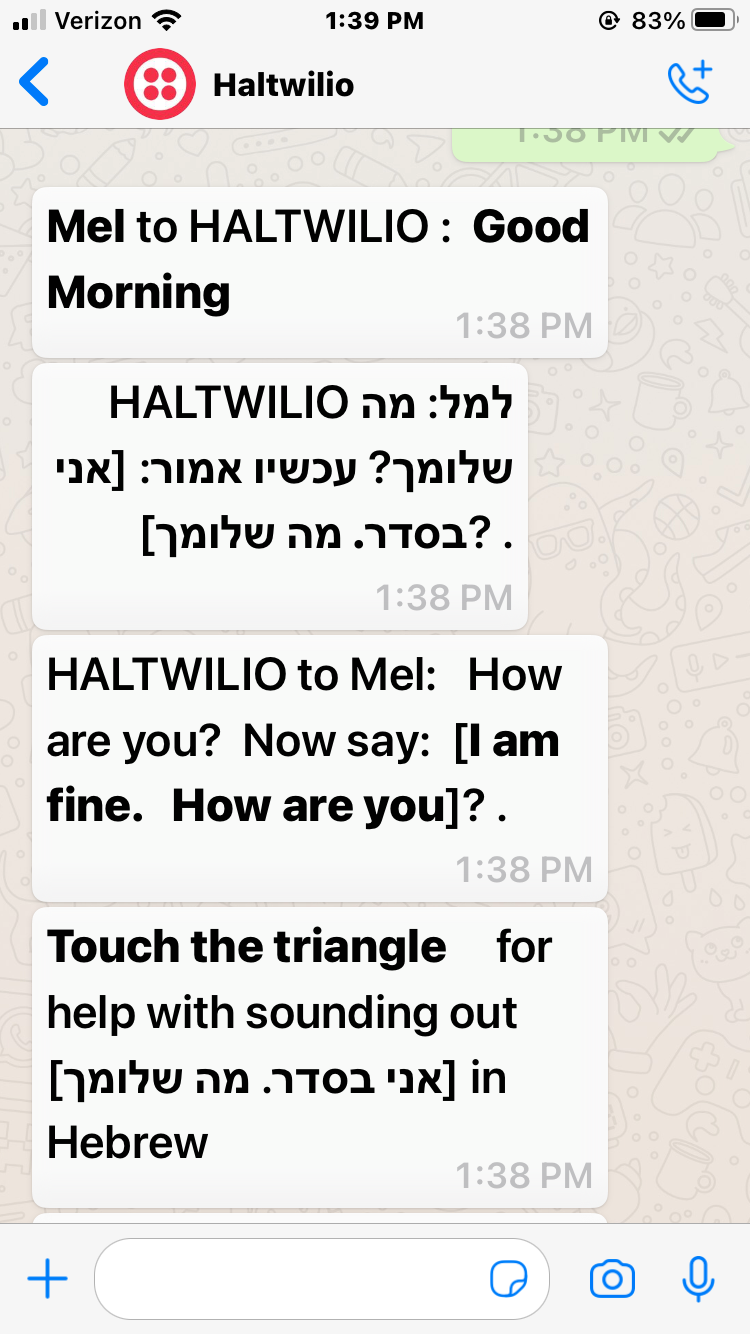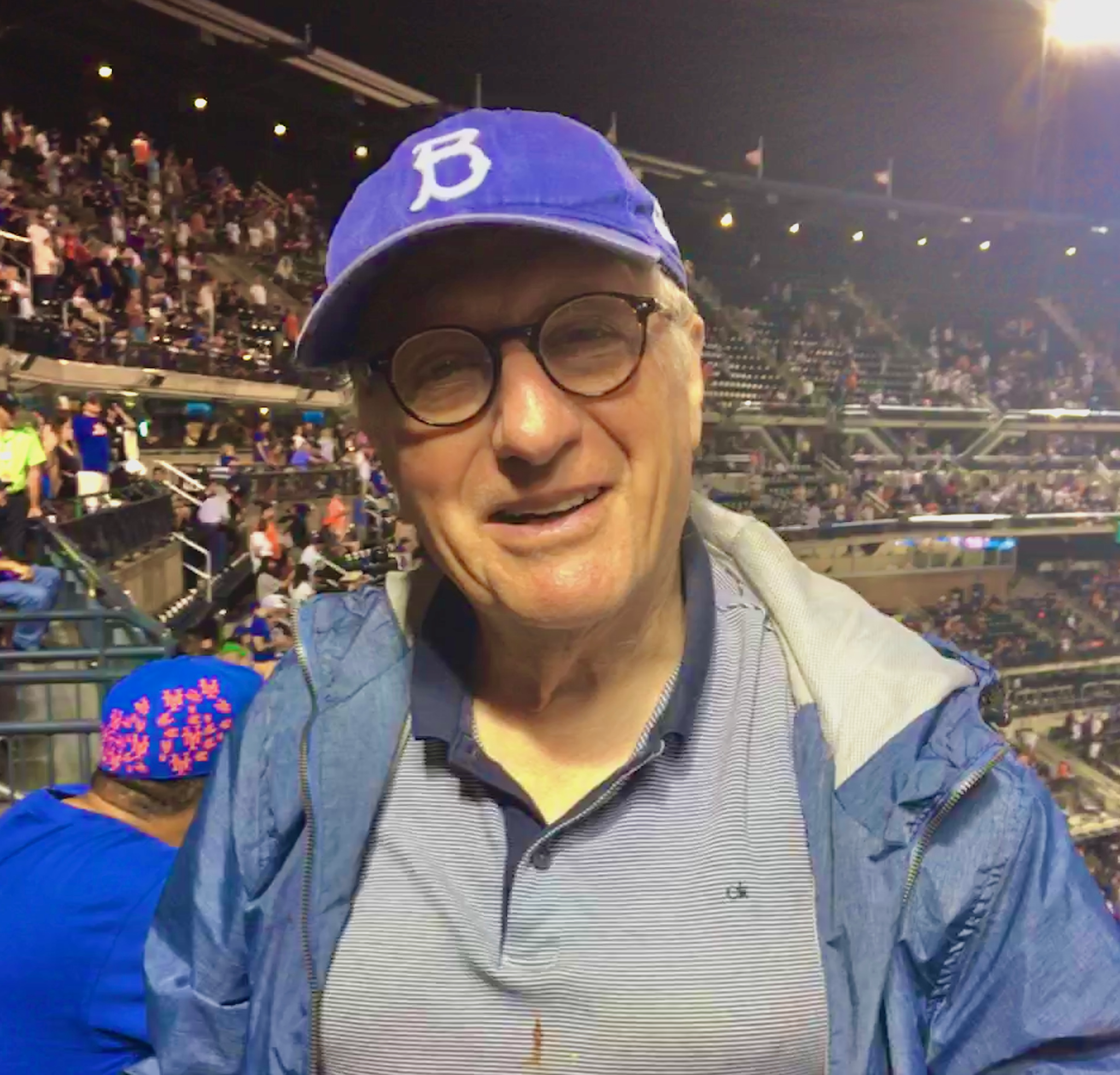What I Built: Mel Feuerman’s Cinema-Inspired App to Learn Languages
Time to read:

When Mel Feuerman first saw the Stanley Kubrick film 2001: A Space Odyssey, he couldn’t have predicted just how those concepts would stick with him. The movie, which follows a space journey to Jupiter with help from the sentient computer HAL, had an enormous impact on cinema—and on our perception of artificial intelligence in computers.
HAL and his cinematic counterparts followed an era of computer science research in automated interaction. As Feuerman watched HAL in 1968, he recalled a natural language chatbot created at MIT four years earlier. ELIZA, Joseph Weizenbaum’s staple experiment in the history of HCI, simulated a Rogerian therapist by reflecting the questions and themes of a conversation back at its user.
It was HAL and ELIZA who came to mind fifty years later, when Feuerman began building his first chatbot with Twilio.
“I called my version of ELIZA, ‘HALTWILIO,’’ or HAL for short,” said Feuerman. “Hal was a bit of a circus as well as an homage to Kubrick and Weizenbaum.”
The original form of the chatbot used ELIZA’s original interaction model and Twilio’s messaging API to have “conversations.” The bot came complete with sound effects and images from Kubrick’s film, and it encouraged users to share how they were feeling. If a user were to say, “I’m feeling afraid,” the bot would then respond, “Why do you feel afraid?”
Since then, the app has evolved into something even more complicated and unique. Today, HALTwilio doesn’t just ask how users are feeling—it helps them learn to express themselves in a number of languages.

The most recent version of HALTWILIO—which Feuerman is still refining—uses Twilio for messaging on WhatsApp and can tutor in English, French, German, and Spanish, Italian, Arabic, Hindi, Hebrew, and Chinese. Users can pull up the app, choose their language of choice through the iPhone keyboard, and start having a conversation.

The app will walk users through the spelling and pronunciation of easy greetings like “hello” and “how are you” in the language of choice, and users can only move forward to the new words when they’ve pronounced the first words well enough for the computer to recognize them.
This was a particular challenge when it came to Hebrew, a language close to Feuerman’s heart thanks to his Jewish heritage. Unlike Spanish, French or German, which mostly use letters that English speakers are familiar with, Hebrew has its own writing system. Before starting to work with Hebrew, Feuerman had been using bolded letters to indicate which words should be spoken in the target language—but bolding doesn’t work with Hebrew.
The work-around he discovered was to place brackets around the English and the Hebrew phrases. That way, users can compare the Hebrew letters to the sounds they make, and slowly learn how to pronounce Hebrew words based on the writing. It’s an innovation he’s especially proud of, and he’s been quick to share it with his family and friends at his synagogue.

Feuerman’s interest in languages goes alongside his passion for developing, and is tied to his life experiences. He even spent one summer taking Chinese classes so he could say hello to his Chinese neighbors in New York. Though Feuerman never studied Spanish or French as a student, he wanted to exchange pleasantries with tourists in New York, or when he went on vacations to Europe. HALTWILIO has been a big help with learning those basics.
Meet the Creator: Melvyn Feuerman
At 81-years-old, Feuerman has spent more than 50 years learning the ins and outs of programming. He’s worked as a computer programmer in the Army as well as for private companies like CitiBank, and the biggest changes he’s seen have to do with the speed and interactivity with which programming now happens. There are no more cards to punch or computer reservation times—though he has found that some software is better than others when it comes to accessibility.

When Feuerman retired five years ago, he bought an iMac in hopes that he could start working on iOS apps. But he quickly discovered there were a lot of rules and regulations, and soon got frustrated. The same thing occurred when he looked at other demo packages, like IBM Watson; it would take a while to get a user ID and actually get started with the programming. But with Twilio, things were a lot different.
“Their mantra is five minutes or less to get you moving, and they gave me a free account in the beginning,” Feuerman says. “They make it so you can do work really fast and they give you good feedback. I really like that.”
In fact, Feuerman was so excited about his first version of HAL 9000 that he approached Twilio CEO Jeff Lawson at an Engage event to share the work he’d been doing on the app. Lawson understood the reference to 2001 and had also heard of the ELIZA experiment from the 1960s.
Since then, Feuerman has been an active member of the Twilio community, asking questions whenever he needs a bit of help and sharing his work with others. As he continues to refine the HALTWILIO app, he’s trying to learn more about Google’s Dialogflow. There are still so many new things to explore in the world of programming that Feuerman sometimes has trouble tearing himself away from the computer.
“I love computing,” Feuerman says. “It’s like driving a million-dollar sports car. You’re driving something a billion people created, like Twilio or the iPhone, and you’re allowing me to have fun with it.”
For more Twilio projects, check out Ahoy or follow our developer account on Twitter. You can also check out the Twilio Community Forums or join us for SIGNAL, Twilio’s Customer & Developer Conference (This link can get you signed up for a SIGNAL 2021 All-Access ticket with 15% off)
Related Posts
Related Resources
Twilio Docs
From APIs to SDKs to sample apps
API reference documentation, SDKs, helper libraries, quickstarts, and tutorials for your language and platform.
Resource Center
The latest ebooks, industry reports, and webinars
Learn from customer engagement experts to improve your own communication.
Ahoy
Twilio's developer community hub
Best practices, code samples, and inspiration to build communications and digital engagement experiences.


